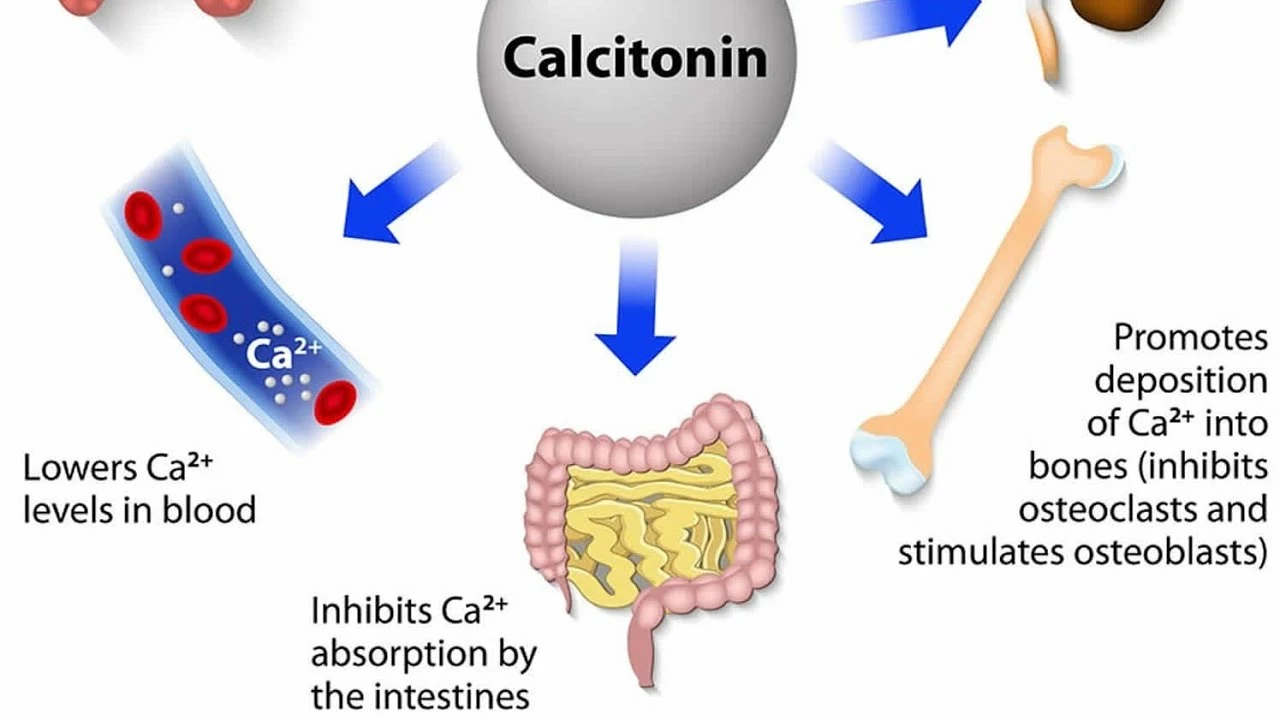Calcitonin: what it does and how to use it
Calcitonin lowers blood calcium and slows bone breakdown. You might see it prescribed for high calcium levels, Paget’s disease, or sometimes for osteoporosis. It’s not the top choice for most bone problems anymore, but it still has useful quick effects—especially when calcium is dangerously high.
What calcitonin is and how it works
Calcitonin is a hormone that tells bone cells called osteoclasts to slow down. Less activity from those cells means less calcium released from bone into the bloodstream. Most medicines are a lab-made form called salmon calcitonin because it works better in humans than human calcitonin.
There are two common forms: a nasal spray and injections (subcutaneous or intramuscular). The nasal spray is often used for long-term bone symptoms. Injections are used for faster control, like when blood calcium is high.
Practical tips for using calcitonin
If you use the nasal spray: follow the exact dosing steps on the label. Blow your nose, then insert the tip and breathe gently while spraying. Don’t use the same nostril every day; alternate. If the spray comes with a pump, prime it as instructed before the first use.
For injections: rotate injection sites, clean the area with an alcohol wipe, and don’t reuse needles. Store unopened vials or spray in the fridge unless the label says otherwise. Once opened, check the leaflet—some products can be kept at room temp for a short period.
Watch for common side effects: flushing, nausea, and nasal irritation with the spray. Injection soreness and redness happen too. Rarely, people allergic to salmon proteins have serious reactions—tell your doctor if you have fish allergies.
One important point: long-term calcitonin use has been linked in some research to a small increase in certain cancers. Because of that, many doctors prefer other osteoporosis drugs (like bisphosphonates, denosumab, or teriparatide) for long-term treatment. Calcitonin is often reserved for specific cases or short-term use.
Before you start: tell your doctor about all medicines and supplements you take, and about pregnancy or breastfeeding. If you’re being treated for high calcium, your care team will check blood calcium and kidney function while you’re on calcitonin. If you’re using it for bones, periodic bone density checks may be recommended.
Final tip: follow the prescription exactly, ask how long you should use it, and if you get unusual symptoms (severe rash, trouble breathing, chest pain), seek help right away. If you want an alternative for long-term bone protection, ask about bisphosphonates or newer options—those usually work better for preventing fractures.
Got questions about a prescription you received? Bring the bottle to your next visit and ask for clear hands-on instructions—proper use makes the difference.
The potential role of calcitonin in managing diabetic bone disease
Hey there, fellow health enthusiasts! So, I've been diving deep into the fascinating world of diabetes management and guess what? Our good old friend calcitonin might just be the new superhero in town. This hormone, usually chilling in our thyroid gland, could be the key to managing diabetic bone disease. Who knew, right? It might just be the 'bone-saver' we've been looking for, helping to maintain bone strength and health. So, here's a cheer for calcitonin, potentially our next big weapon in the fight against diabetes-related bone disease!
© 2025. All rights reserved.

